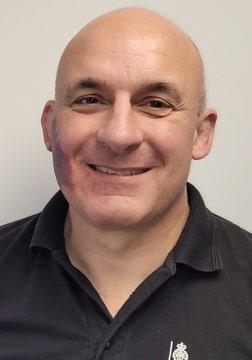
3 minute read
Looking ahead to a sustainable 2024
DE&S Deca, explains how reverse engineering is helping create a sustainable future for Defence.
At DE&S Deca, our engineers are sometimes more like detectives.
In our labs and offices in Sealand, North Wales, we solve the problem of military equipment and components being thrown away when there’s no immediate way to repair them or test whether they’re still operating safely. Our engineers use reverse engineering to find out exactly how specialised electronics and other components work, and then devise methods to recreate them.
Take, for example, a circuit board that goes inside a military platform. It’s often the case that once a small part of it is no longer available from a sub-contractor, the original equipment manufacturer stops making that entire circuit board and replaces it with something new. If this happens every five years, and DE&S has a platform designed to be in service for 20 years, the cost and environmental impact of repeatedly replacing this can be considerable.
What Deca can do in our test labs is work out how to identify the broken part, so it can be replaced on existing circuit boards with a like-for-like, approved alternative or newly commissioned part. This not only saves money, it also saves the time it would take to replace the board across, for example, an entire fleet, and prevents unnecessary disposal of otherwise-working parts.
The projects that come into Deca can take anything from a couple of days to six months to complete, and we work our way through hundreds of jobs every year.
In one instance, engineers on board a Type 45 destroyer had experienced corrosion and availability issues with a wingnut that is used to secure panels to the hull. They sent the design to Deca and we were able to use our Additive Manufacturing capability to 3D-print new wingnuts to the correct quality and safety standards.
A much longer project has been creating innovative support solutions for our fleet of Typhoon fighter jets. We have installed a specialist, Typhoon-specific test stand at Sealand that reduces turnaround times for repairing components from months to days and annual costs by up to £1.4 million.
My team has also developed a ‘repair not replace’ programme for Typhoon batteries, cables and other items previously considered not worth repairing. We’ve lowered the support costs for the Typhoon platform and improved sustainability by avoiding the disposal of valuable equipment. And this has had the additional benefit of increased availability of Typhoon jets.
I’ve been at Sealand since 1988 and what’s kept me interested for 35 years is that no two jobs are ever the same. Today, we might be asked to reverse engineer a component that’s out of stock worldwide but necessary for a plane to operate safely. Tomorrow, I may get a call asking us to spend six months developing automated test solutions to replace lengthy manual processes.
As our available resources shrink and climate change worsens, the value of this work gets clearer and clearer. Our efforts not only save the MOD millions of pounds a year, they reduce our impact on the environment by allowing us to reuse and repair equipment, rather than throwing it away and replacing it when it’s still serviceable.











